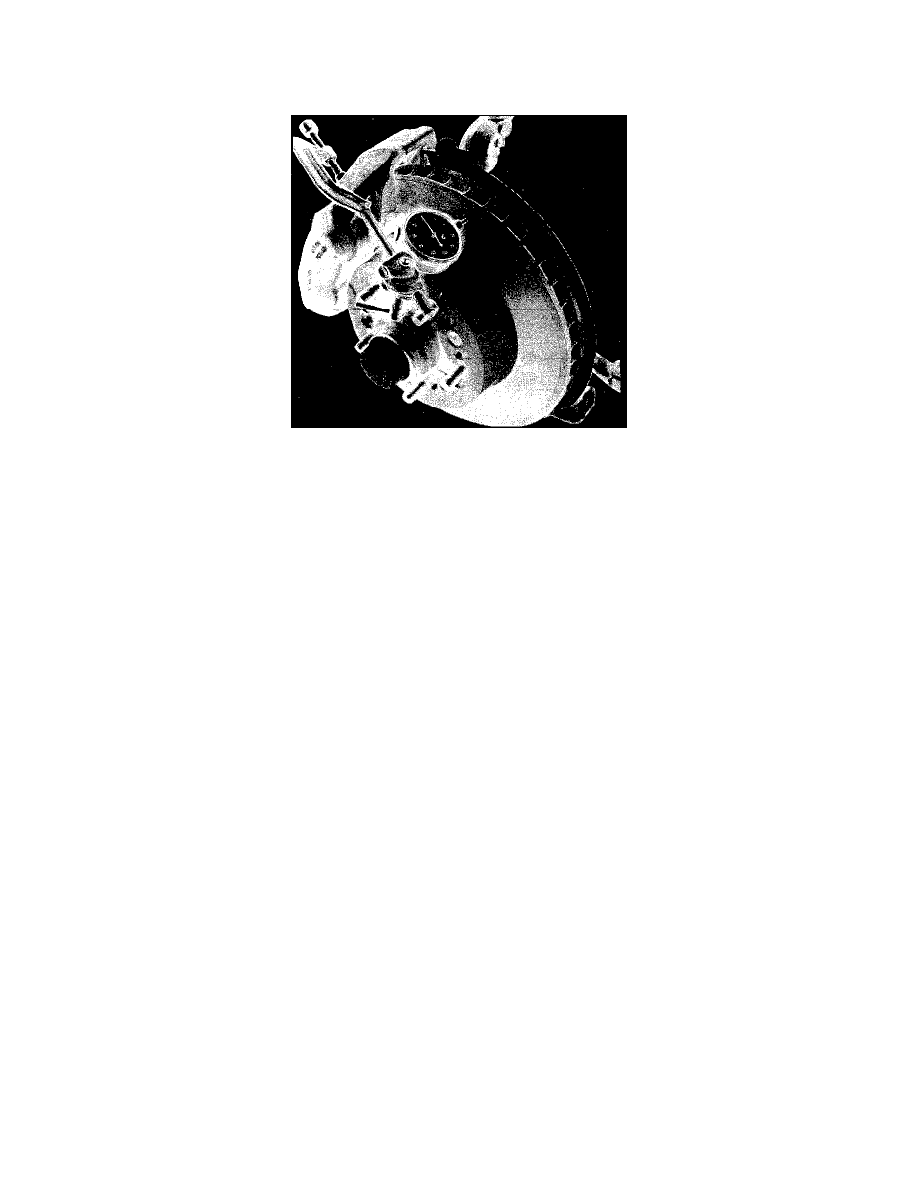Corvette V8-350 5.7L (1982)

Brake Rotor/Disc: Testing and Inspection
Front
FRONT ROTOR CHECKING PROCEDURE
Dial Indicating Disc For Runout
Raise vehicle on hoist. Tighten the adjusting nut of the wheel bearing until all play has been removed. It should be just loose enough to allow the wheel
to turn. Clamp a dial indicator to the caliper so that its button contacts the disc at a point about 1 inch from the outer edge. When the disc is turned, the
indicator reading should not exceed 0.005". If runout exceeds this amount, the hub and disc assembly should be repaired. Due to the close tolerances
involved, it is not recommended that the front hub and disc be machined or serviced separately.
After checking the runout, readjust the wheel bearings.
Parallelism
1. Parallelism is the measurement of the thickness of the rotor at four or more points around the circumference of the rotor. All measurements must
be made at the same distance in from the edge of the rotor.
2. A rotor that varies over 0.0005" (0.013 mm) causes pedal vibration, as well as front end vibration during brake applications. A rotor that does not
meet these specifications may be refinished to specifications if precision equipment is available.
Tolerance and Surface Finish
In manufacturing the brake rotor, tolerances of the rubbing surfaces for flatness, for parallelism and for lateral runout are held very closely. The
maintenance of these close controls on the shape of the rubbing surfaces is necessary to prevent brake roughness.
In addition to these tolerances, the surface finish must be held to a specified range. The control of the rubbing surface finish is necessary to avoid pulls
and erratic performance and to extend lining life.
Light scoring of the rotor surfaces not exceeding 0.015" (0.38 mm) in depth, which may result from normal use, is not detrimental to brake operation.
Machining
Since accurate control of the rotor tolerances is necessary for proper performance of the disc brakes, machining of the rotor should be done only with
precision equipment.
NOTICE: All brake rotors have a minimum thickness dimension cast into them. This dimension is the minimum wear dimension and not a refinish
dimension. Do not use a brake rotor that will not meet the specifications, as shown below, after refinishing. Replace with new brake rotor.
